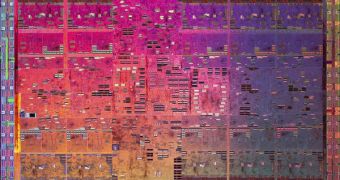Three out of sixteen Nvidia partners announced today the release of new GTX 260 cards, featuring 216 shader cores instead of 192 as the original product. The new cards landed fast enough in the hands of reviewers, so information on their performance levels is already available on the web. Yet, there are also other interesting facts about these new cards that caught our attention, and we believe they shouldn’t pass around unnoticed.
One of the new cards, namely the GeForce GTX 260 Core 216 from BFG Technologies, was tested by Guru 3D. The guys from Guru also took a closer look at the architecture of the new card, and unveiled a rather disappointing fact: the difference between the 192 and 216 models is practically inexistent. Also, both cards resemble strangely enough the 280 card released earlier this year, and the new 216 GTX 260 appears to be nothing but a 280 crippled card.
The calculations are quite simple. The shader cores inside the GPU are clustered in three blocks, each of eight shader processors. The GeForce GTX 280 card has 240 shader units, meaning that there are ten clusters of 24 shaders each. At the same time, a standard GTX 260 has 192 shader processors, totaling eight clusters. According to the guys from Guru 3D, the GTX 260 Core 216 is a 280 card with a cluster of shaders disabled. The picture attached to this article should present this fact in a better way.
When it comes to performance, the new 24 shader processors that have been added to GTX 260 Core 216 bring the difference between the new card and the standard 260. That is so because both cards have the core clock set at 576MHz and the shader clock running at 1242MHz. Also, both cards feature 896MB of 999MHz dedicated memory, as well as a 448-bit GDDR3 memory bus. Overclocked cards from Nvidia's partners rise the core speeds and memory frequencies high enough to make their cards competitive with GeForce GTX 280.
The price for the new card also remains the same, or at least close enough. As we already said in an earlier article, this move may cause overstock issues. Even so, it seems that other Nvidia partners are also interested in releasing 216 shader cards. Up until now, the green company made no comment on the new upgraded releases.
This is the second “dirty” news we hear on Nvidia today. While two law suites have been filed against the company on the account of the weak die/packaging material it used on its G84/G86 series and which caused the cards to fail at high rates, it seems that the Santa Clara company will use the same old high-lead solder bumps on future cards, although it is not sure on which of them. The graphics manufacturer announced that it had already started the transition to eutectic solder bumps, which are more reliable, yet some wonder whether it will keep its word.

 14 DAY TRIAL //
14 DAY TRIAL //